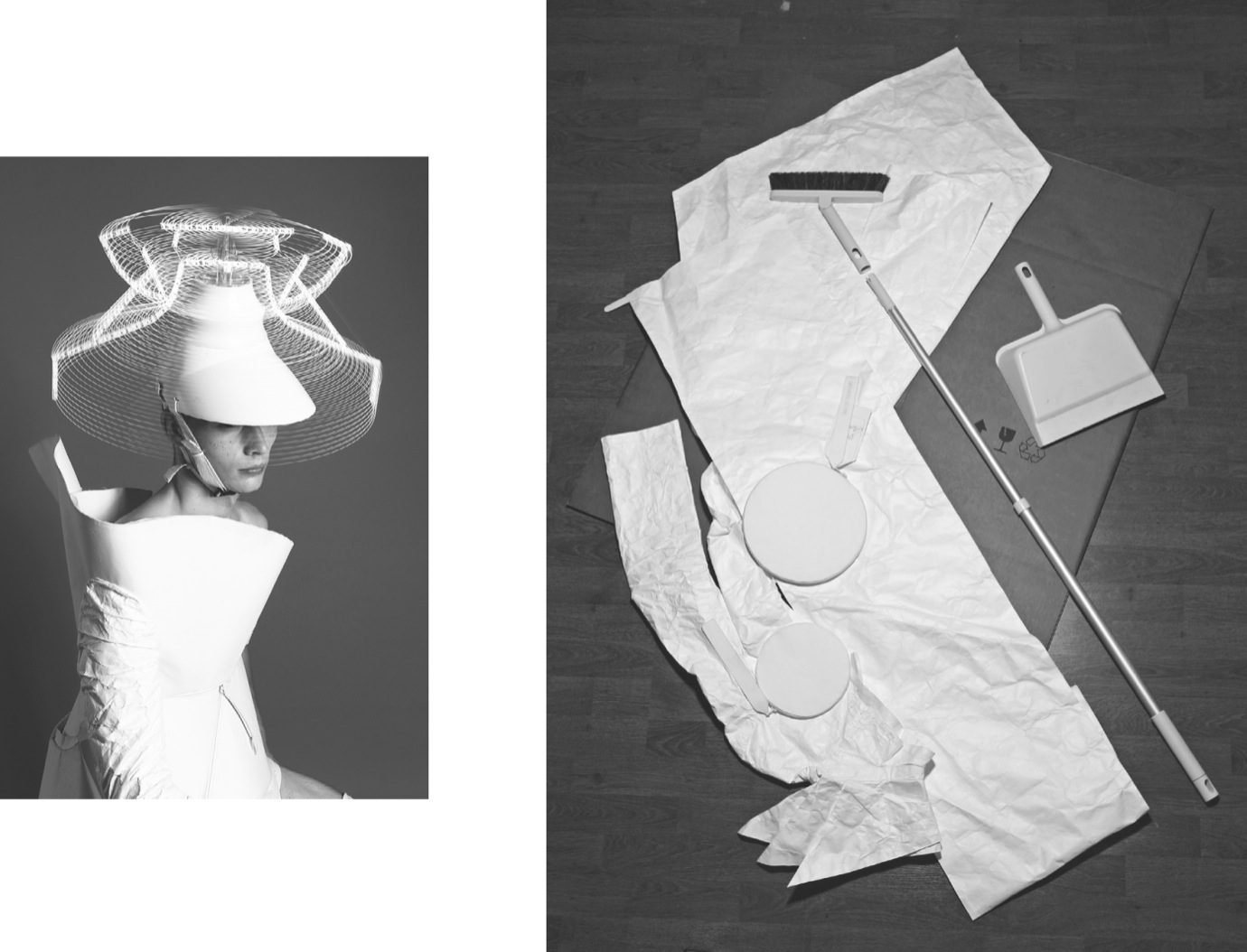A graduate from this year’s Royal College of Art MA Fashion Design course, Harris’ collection started with a late 19th century Walking Dress that he discovered during a series of trips to Bath Fashion Museum. Drawn to the dress’ intricate structure and deceptive simplicity, though he saw many of the museum’s pieces, the Walking Dress was always at the back of his mind. “I loved its construction, how clever it is, and how well cut,” he says.
He was wary, though, of being a “designer who makes Victorian-inspired things,” so he decided to create a context for the dress. He went to Nottingham, to the shop where the dress had been sold, and mapped out the history of the site and the family who had owned it. He looked at other garments from the era, spoke to archivists, and compiled everything into a meticulous folder of notes, emails, scans and photographs that he plans to gift to the museum. “I broke down into it,” he explains. “I researched the layers, what went on underneath it, and what was appropriate at the time.”
When his tutor David Kappo asked who his customer was, Harris realised he knew exactly – “‘I don’t need a customer, I can tell you who my person is,’ he said. And so, he asked Livia to be his muse.

































